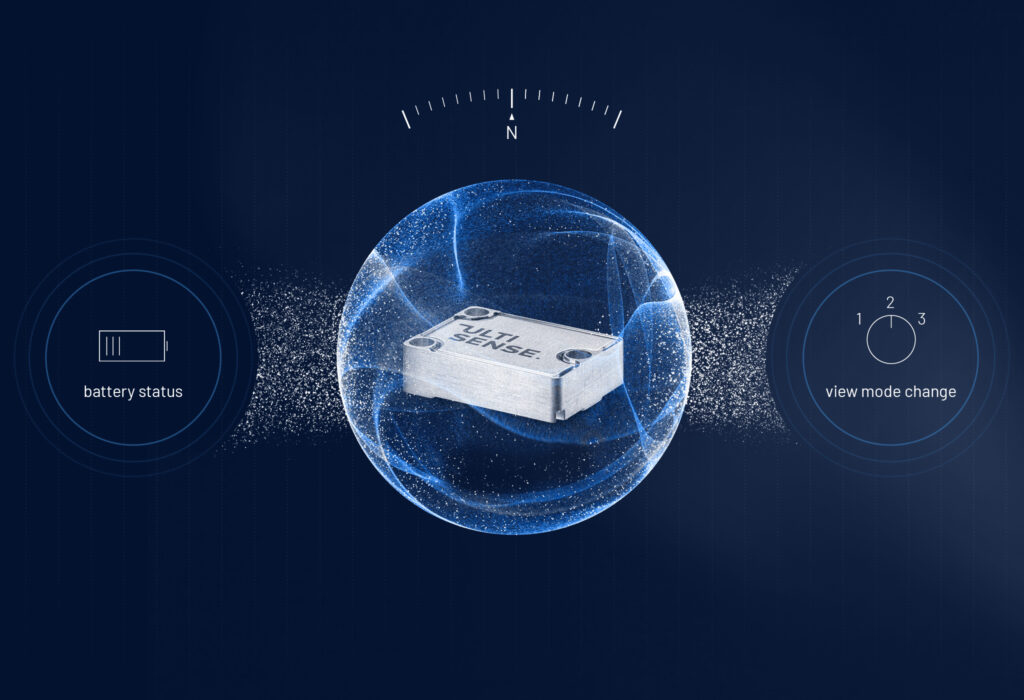Safran Vectronix offers a solution with DMC-pico and System State Compensation
System State Compensation (SSC) is a feature unique to the DMC-pico. It allows an almost endless number of compensations with the resulting improvement in azimuth accuracy with a minimum amount of additional effort from the integrator.
What is System State Compensation
System State Compensation (SSC) provides an additional method to improve the accuracy of the DMC-pico when integrated into a system where hard magnetic materials are present.
This method allows to remove the disturbance effects of hard magnetic materials or currents within a host system or when the status can be detected by the host (e.g. with a module or switch).
Magnetically hard materials can be permanently magnetised by a strong magnetic field. Examples of hard magnetic materials include steel and alloys that contain various amounts of aluminium, nickel, cobalt and copper. Hard magnetic materials will typically produce an effect on the compass of approximately 3 to 30°.
How does System State Compensation work?
Hard magnetic materials and currents effectively add an offset to the magnetic field values as detected by the compass sensors. If a current is the source, then the offset is proportional to the size of the current. The magnetic field offsets are determined by measuring the magnetic field-difference between different states of the system when placed in a mechanical and magnetic stable location. In order to use the SSC, we need to have a system by which we identify all the possible states that the system can be in. We do this by means of two values: system state number (ssn) and system state value (ssv), where ssv is a subset of ssn. Once a single 12 point compensation is done in one state, and the system is placed in other states and offsets measured, the system will calculate the new compensation values for any combination of states without the need for new 12 point compensations or “chicken dances”.
As an example, the night vision could be System State Number 1 (ssn =1) and within ssn=1, there are two states, OFF and ON. These values could then be given the system state values ssv=0 and ssv=1 respectively.
So when night vision is OFF; the state is ssn=1, ssv =0. A 12-point compensation could be done in this state and the system will remember the state values and the compensation values for this state. Now if the Night Vision is turned on, we would normally have to do another 12-point compensation and store the new compensation values. But in SSC, there is no need for another compensation, we just tell the system we now have Night Vision ON (ssn=1, ssv=1) and it will work out the offset automatically without any movement of the host required.

Benefits of System State Compensation
The System State Compensation is a feature unique to the DMC-pico. It will improve the accuracy of the DMC-pico when integrated in a system where there are numerous hard magnetic influences that need to be compensated. It removes the need to do multiple 12 point compensations or chicken dances. We have successfully used SSC in one of our handheld devices. Without SSC, we would not have met the demanding specifications for azimuth accuracy without a complex and expensive redesign.
Conclusion
The SSC is a unique and clever method to overcome the greatest challenge of a Digital Magnetic Compass when integrating it in a host system, that is, the effect of hard magnetic materials and influences, including moving metal parts and electrical currents, on the azimuth readings. It also provides a cost effective method of overcoming magnetic influences discovered after the final design stage so that redesigns and the associated costs are not necessary.
